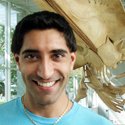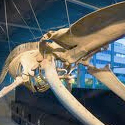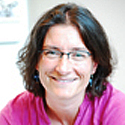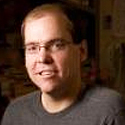Team:British Columbia/Team
From 2011.igem.org
| Line 3: | Line 3: | ||
==Team Members== | ==Team Members== | ||
<gallery> | <gallery> | ||
| - | Image:Gurpal.jpg|Gurpal Bisra: I am an engineering physics student interested in pursuing bioengineering after I graduate. I joined the iGEM team to further develop my biological skills, work in a fun group environment and apply my engineering skills to a real life biological problem. I have traveled to 14 countries so far and my thirst for adventure never ceases! In my spare time, I enjoy drawing, doing martial arts, making people laugh and playing badminton. | + | Image:Gurpal.jpg|Gurpal Bisra: I am an engineering physics student interested in pursuing bioengineering after I graduate. I joined the iGEM team to further develop my biological skills, work in a fun group environment and apply my engineering skills to a real life biological problem. I have traveled to 14 countries so far and my thirst for adventure never ceases! In my spare time, I enjoy drawing, doing martial arts, making people laugh and playing badminton. My contribution to our wet lab component was to alter a yeast cell to contain the mutant erg20-2 gene instead of the wild type erg20 gene. I am making yeast bio-bricks for the erg20 and erg20-2 genes. Additionally, I am assisting Samuel Wu to develop plasmids that contain the K6R-HMG2 and IDI1 genes. My contribution to the modeling component of our project was to simulate the biochemical pathways for our genetically engineered yeasts. I programmed simulations using the SimBiology Toolkit in MATLAB. Every yeast cell is designed to produce one specific monoterpene in mass, and others monterpenes in small amounts. Furthermore, I am assisting Jacob Toth and Joe Ho develop another model which shows the spread of the pine beetle using ARCGIS. |
| - | My contribution to our wet lab component was to alter a yeast cell to contain the mutant erg20-2 gene instead of the wild type erg20 gene. I am making yeast bio-bricks for the erg20 and erg20-2 genes. Additionally, I am assisting Samuel Wu to develop plasmids that contain the K6R-HMG2 and IDI1 genes. | + | |
| - | My contribution to the modeling component of our project was to simulate the biochemical pathways for our genetically engineered yeasts. I programmed simulations using the SimBiology Toolkit in MATLAB. Every yeast cell is designed to produce one specific monoterpene in mass, and others monterpenes in small amounts. Furthermore, I am assisting Jacob Toth and Joe Ho develop another model which shows the spread of the pine beetle using ARCGIS. | + | |
Image:Daisy.jpg|Daisy Ji | Image:Daisy.jpg|Daisy Ji | ||
Image:Ubcmari.jpg|Marianne | Image:Ubcmari.jpg|Marianne | ||
Revision as of 23:06, 5 August 2011

Contents |
Team Members
Gurpal Bisra: I am an engineering physics student interested in pursuing bioengineering after I graduate. I joined the iGEM team to further develop my biological skills, work in a fun group environment and apply my engineering skills to a real life biological problem. I have traveled to 14 countries so far and my thirst for adventure never ceases! In my spare time, I enjoy drawing, doing martial arts, making people laugh and playing badminton. My contribution to our wet lab component was to alter a yeast cell to contain the mutant erg20-2 gene instead of the wild type erg20 gene. I am making yeast bio-bricks for the erg20 and erg20-2 genes. Additionally, I am assisting Samuel Wu to develop plasmids that contain the K6R-HMG2 and IDI1 genes. My contribution to the modeling component of our project was to simulate the biochemical pathways for our genetically engineered yeasts. I programmed simulations using the SimBiology Toolkit in MATLAB. Every yeast cell is designed to produce one specific monoterpene in mass, and others monterpenes in small amounts. Furthermore, I am assisting Jacob Toth and Joe Ho develop another model which shows the spread of the pine beetle using ARCGIS. |
|||
Laura: I have many loves in life including: snowboarding, windsurfing, sailing, biking, gardening... AND Biology! I am pumped to be on this year's iGEM team because we are a diverse bunch and have so much to learn from each other! I am very enthusiastic about biology and passionate for people so it is a natural fit for me to be spearheading the Human Practices aspect of our project. I am keen to engage the community in discussions about synthetic biology in non-traditional ways... Creative art projects, videos, forums, roadside chats... Also, It is especially exciting to be partnering with Science World in mentoring and educating Vancouver high school students. We hope to inspire these teenagers to pursue future opportunities in Science... and maybe even a 2012 Vancouver Highschool iGEM team! |
Graduate Advisors
Alina Chan: I am a PhD student in the Hieter lab utilizing yeast as a model eukaryote to research chromosomal instability. This is my second year with the UBC iGEM team and I'm super excited that the team's using yeast to produce monoterpenes. (Boston, here we come!) My main wet lab role is to train team members in the art of working with yeast. I also help with general troubleshooting and experimental design. |
We have also received help from:
Shing Hei Zhan
Faculty Advisors
We have also received help from:
Dr. Christopher Keeling
Dr. Joerg Bohlmann
Dr. Collete Brieul
Dr. Scott Digustini
University of British Columbia

The University of British Columbia, established in 1908, educates a student population of 50,000 on major campuses in two cities and holds an international reputation for excellence in advanced research and learning. The largest campus is 30 minutes from the heart of downtown Vancouver, a spectacular campus that is a 'must-see' for any visitor to the city -- where snow-capped mountains meet ocean, and breathtaking vistas greet you around every corner. The Vancouver campus boasts some of the city's best attractions and recreation facilities, including the Museum of Anthropology, the Chan Centre for the Performing Arts, the UBC Botanical Garden and Centre for Plant Research, and endless opportunities to explore forested trails in the adjoining 763-hectare Pacific Spirit Regional Park.
Michael Smith Laboratories

In 1987, the University of British Columbia made a bold investment in the future by establishing Canada's first interdisciplinary biotechnology unit. Under the visionary leadership of Dr. Michael Smith, the UBC Biotechnology Laboratory was created and a gifted team of young scientists were recruited. In 2004, the Biotechnology Laboratory was renamed the Michael Smith Laboratories in honour of the founding Director.
There are approximately 250 research personnel in the Laboratory, with research activities falling into four major areas of emphasis: molecular genetics, fermentation and bio-process engineering, plant and forestry molecular genetics, bioinformatics. There is a strong emphasis on interdisciplinary interaction and overlap of interest among the different groups. Awards from prestigious national and international organizations are continually recognizing the faculty members for their excellence.
Vancouver, Canada

Vancouver, one of the world's most spectacular cities, welcomed the world as host city of the 2010 Olympic and Paralympic Winter Games.
The city of Vancouver is renowned for its incomparable natural beauty and cultural diversity. For thousands of years the Coast Salish people have called the area now known as Vancouver home. Their history and cultural traditions, upholding a deep respect for nature and humanity, are tightly woven into the city's cultural fabric.
Today, Vancouver's cosmopolitan appeal can be attributed to its international population of citizens; there are Aboriginal populations as well as British descendants, Chinese, Japanese, German, Indo-Pakistani, French, Italian, Dutch, Scandinavian, Ukrainian, Filipino and Greek, among other diverse nationalities. As a world-class city, Vancouver continues to draw the world's great nations together in a celebration of human spirit and achievement.
 "
"












